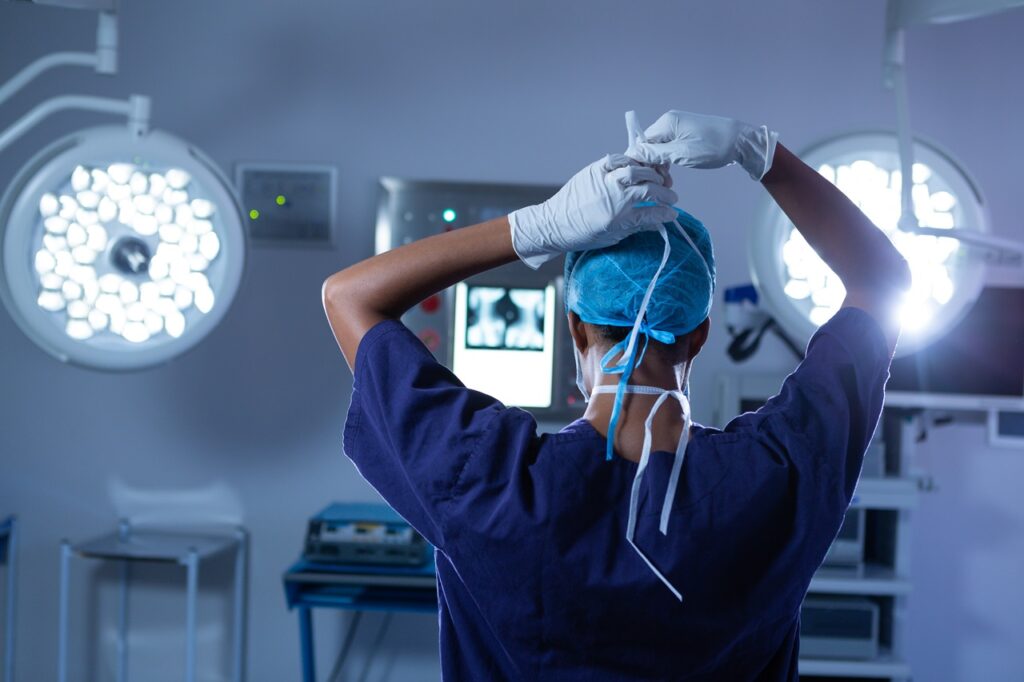Common Back Pain Treatments By Neurosurgeons in Frisco TX

Image sourced from Freepik
Approximately 16 million adults in the United States suffer from chronic back pain. Chronic pain can happen after an injury or without any damage to the body. Experiencing chronic pain can considerably affect your quality of life, your physical and mental health, and your relationships with others. Your independence, mobility, and ability to work can also be affected.
Before getting into common treatments for back pain, some conditions that are commonly related to chronic back pain are:
Bulging or herniated discs
Intervertebral discs are sponge-like cushions separating the bones of the spine, also known as vertebrae. Discs keep the spine stable, provide shock absorption, and allow for movement. A bulging disc pushes the inner core of the disc outward, against the spinal canal, but the disc remains intact. A herniated, or ruptured, disc is when the inner core breaks through its protective layer. Bulging discs can cause leg and back pain, as well as sciatica. Herniated discs are typically considered more severe and tend to cause more pain because they usually protrude farther and put more pressure on nerves. However, it is possible to have disc problems without back pain. Disc disease is often found accidentally, while X-rays are being done for another reason.
Skeletal irregularities
You can suffer back pain if you have an abnormal curvature of the spine. Scoliosis, a condition in which the spine curves to the side, can lead to back pain, but typically only if it is severe.
Arthritis
Spinal arthritis is inflammation of the connections between the vertebrae or the joints that link your lower spine and pelvis. While arthritis can occur anywhere on the spine, it’s frequently in the neck and lower back. It may be related to wear and tear, infection, autoimmune disorders, and other conditions. Sometimes arthritis can lead to spinal stenosis, which is when the space around the spinal cord narrows. The causes of spinal arthritis are still widely unknown, except osteoarthritis, which is the most common type and is generally the result of wear and tear.
Osteoporosis
Osteoporosis is a very common disease that causes thin and weak bones. With osteoporosis, the bones become brittle and more susceptible to unexpected and sudden breaks. Unfortunately, this disease can progress without any pain or symptoms. Therefore, sometimes it’s not found until bones break.
Degenerative disc disease
Degenerative disc disease happens when normal changes in the discs of your spine from wear and tear cause pain. Discs start to dry out and shrink as you age. The space between the vertebrae narrows, decreasing the spine’s flexibility and making it less stable. Degenerative disc disease can cause pain, weakness, and/or numbness.
Treatment
Within a month of home treatment, most back pain improves. However, back pain is a complicated condition and everyone is different. For many, the pain will go away after a few months, but a few may have severe, persistent pain.
It’s important to note, that bed rest isn’t recommended. You will want to continue the light activities of daily life, like walking, as much as you can handle. Of course, you should stop any activity that increases your pain, but you shouldn’t avoid activities out of fear of pain.
The use of heat and over-the-counter pain relievers might be all you need. Your doctor might recommend other therapies or stronger medications if home treatments aren’t working after a few weeks.
Medication
Topical pain relievers
Topical pain relievers can be creams, ointments, salves, or patches. They deliver pain-relieving substances through your skin.
Nonsteroidal anti-inflammatory drugs (NSAIDs)
Naproxen sodium or ibuprofen may help reduce back pain. Overuse of these medications can cause serious side effects, so only take them as directed. Your doctor may prescribe prescription NSAIDs if traditional pain relievers don’t help your pain.
Muscle relaxants
Your doctor might suggest a muscle relaxant if other pain relievers don’t improve your mild to moderate back pain.
Antidepressants
Some antidepressants, like duloxetine and amitriptyline, have been found to also relieve chronic back and nerve pain.
Narcotics
Drugs containing opioids, like hydrocodone and oxycodone, can be used for a short period and under close supervision. The prescription would likely provide less than a week’s worth of medication because opioids aren’t effective when used for chronic pain.
Physical Therapy
In physical therapy, you can learn exercises to strengthen your back and abdominal muscles, increase your flexibility, and improve your posture. Regularly doing these exercises can help keep the pain away. Physical therapists will also educate you on how to change your movements during a pain flare-up to avoid worsening symptoms while staying active.
Surgical and Other Procedures
If other measures don’t alleviate the pain, some common procedures used for back pain include:
Cortisone injections
If you’ve tried other treatments without positive results and your pain goes down your leg, your doctor may suggest injecting cortisone and a numbing agent into your epidural space- the space around your spinal cord. While cortisone is a powerful anti-inflammatory that can help decrease inflammation around nerve roots, its effects typically only last one to two months.
Radiofrequency neurotomy
This is a procedure where a small needle is placed through the skin with the tip near the affected area. Radio waves then travel through the needle to damage the nerves nearby, interfering with their delivery of pain signals to the brain.
Implanted stimulators
Implanted stimulators are devices that are implanted under the skin that can send electrical impulses to particular nerves to obstruct pain signals.
Surgery
If you experience worsening muscle weakness from nerve compression or relentless, radiating leg pain, surgery might benefit you. Normally, surgeries are reserved for structural problems like spinal stenosis or herniated discs that didn’t respond to other therapy.
If you’re looking for neurosurgeons in Frisco TX, Dr. Kutz is a highly recommended spine surgeon who can help give you your life back with his innovative and minimally invasive surgical techniques.
